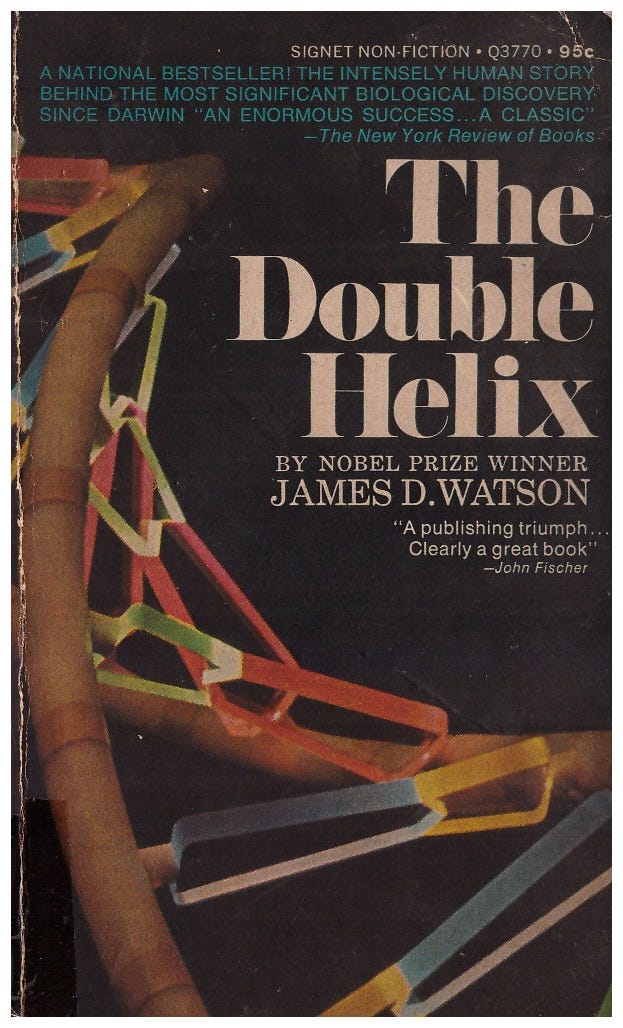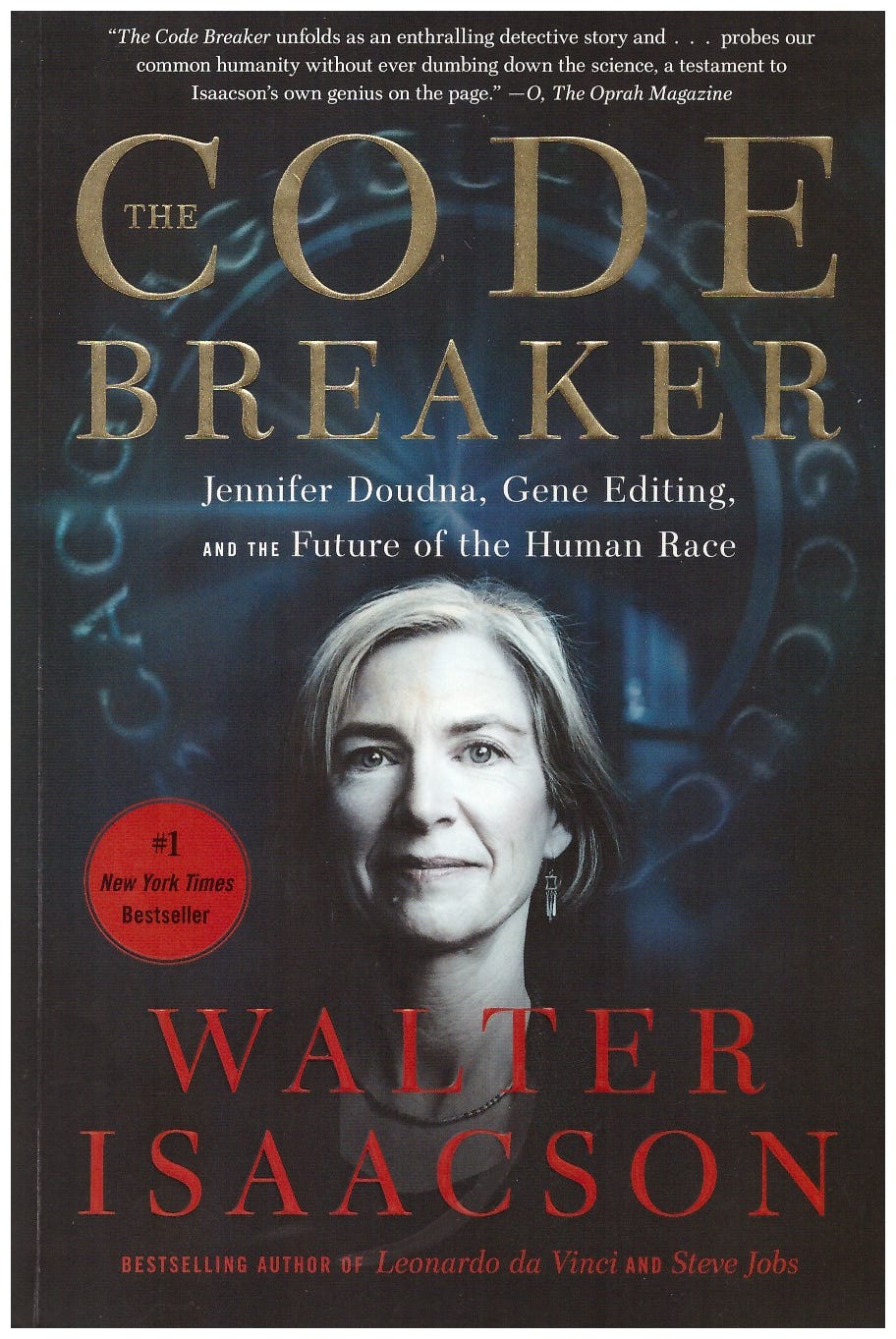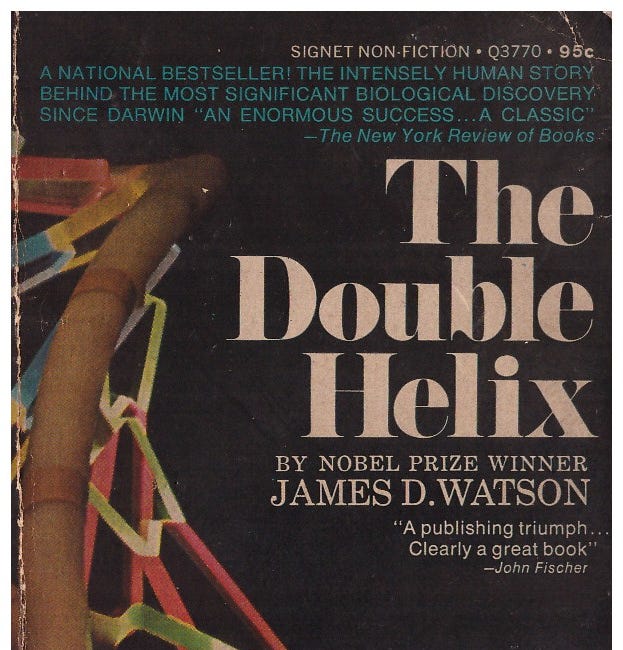Rewriting the Books of Our Library: Fiction, Science, and the Limits of the Human
DNA, CRISPR, and the Future We (Perhaps) Don’t Control
Beneath a clear blue sky, a beautiful helicopter slices through the air with its silver silhouette. Behind it, the camera captures the machine framed against the awakening of a majestic tropical island. The scene is suddenly broken by the swelling orchestral notes of “Journey to the Island,” by John Williams. Shortly after, in the heart of the island, within a temple raised by scientific ambition, John Hammond—impeccable in his white suit, holding his cane tipped with amber containing a fossilized mosquito—presents his visionary project in an enthusiastic, confident—almost childlike—tone.
Surely most readers will recall that this introduction refers to the story of Jurassic Park (1990), written by Michael Crichton and immortalized in film by Steven Spielberg in 1993.
Science fiction knows no bounds, but it is well known that it must rely on principles that ensure a degree of plausibility with reality—otherwise, it would be pure fantasy. The workings of the code of life, DNA, as described by James Watson and Francis Crick in 1953, can often be difficult to grasp. In The Double Helix (1968), James Watson recounts, with the vivid language of a novel, the paths that were carved toward the scientific discovery later awarded the Nobel Prize in Physiology or Medicine in 1962. Undoubtedly, it is required reading.
Understanding the basics of DNA, the silent author behind every living being, its mechanisms and how it gives rise to life requires a good deal of abstraction. To truly comprehend it, one must dedicate much study and effort, given the vast theoretical and practical field that was presented to us like a spark by Professor Salmo Raskin in our medical school genetics classes.
Imagine an immense library, with shelves stretching to the horizon. Each book is the story of a living being: your father, a tree, myself. Their texts are not written in our alphanumeric alphabet, but in A, T, C, and G. These building blocks of life are combined into genes, the chapters of the books, that tell us how we breathe, our blood type, or the color of our hair. DNA is the guardian of this library. Within the nucleus of each cell, it works like a meticulous librarian, organizing instructions and ensuring they are read and copied correctly when a cell divides or a newborn is formed.
Watson and Crick enabled us to understand the alphabet of life, to read its chapters, to gradually interpret its stories. With that, we’ve learned which diseases are caused by typos in the text or which species were lost with the disappearance of certain books. And, with our inherent ingenuity: why not re-edit a flawed text? Or perhaps try to rewrite a vanished book?
In Jurassic Park, John Hammond sought to rewrite vanished books, to bring back extinct dinosaurs—always confident in an atmosphere of absolute safety and control:
“10,000-volt fences... full 50 miles of perimeter fences… concrete moats… motion-sensor tracking systems… only females, so it’s impossible to breed…”
“Relax, try and enjoy yourself.”
His fantastic endeavor did not go without challenge from Ian Malcolm, mathematician and chaos theorist, portrayed by Jeff Goldblum:
“John, the kind of control you’re attempting is not possible. If there’s one thing the history of evolution has taught us, it is that life will not be contained. Life breaks free, expands to new territories, crashes through barriers—painfully maybe, even dangerously... life finds a way.”
Even more powerful than Jurassic Park’s cloning machinery, imagine a tool capable of rewriting a chapter of a story—or, more precisely, replacing a phrase or a single word. Such a tool has already been built, and its discovery is recounted in The Code Breaker by Walter Isaacson, published in 2021. Jennifer Doudna, a biochemist, had her scientific curiosity sparked during her childhood in Hawaii. The book vividly portrays the foundations that led to her discovery, the influence of Watson’s work, the collaboration and competition among fellow scientists, the vision of potential benefits, and the profound ethical dilemmas raised by the darker uses of the technology. The scientific paper that first described the use of the CRISPR-Cas9 system as a gene-editing tool in humans, published in 2012, marked a biotechnological revolution. This editing technique, developed alongside Emmanuelle Charpentier, was awarded the Nobel Prize in Chemistry in 2020.
CRISPR is the magic pen that allows us to rewrite the books of life. Using an RNA molecule as a guide, it can find the exact line, the exact letter that needs to be changed. It directs the Cas9 “scissors,” which cut the DNA with surgical precision. Once cut, DNA—the librarian—diligently attempts to repair itself, and it is precisely in this moment that we can insert a new letter, a new word, or even an entire passage. It’s a technology considered widely accessible, with the potential to change the world—to cure genetic diseases—but also one fraught with countless ethical nightmares.
On April 7, 2025, TIME magazine published a story titled “The Return of the Dire Wolf,” with a cover bearing the word Extinct. The headline announced the creation of three wolves genetically modified to resemble the dire wolf, a species that went extinct 10,000 years ago.
Despite the major media buzz, the term de-extinction used in the article drew criticism, since it wasn’t the cloning of an extinct animal that had taken place. As noted by Salmo Raskin:
“This is gene editing; in other words, they are modifying the genetics of a living animal to give it characteristics of an extinct one.”
As a startup in the field of genetic editing—and therefore in search of funding—Colossal Biosciences ended up using media strategies that often attract this type of criticism. Still, we must recognize its merit as a pioneer in using CRISPR-Cas9 technology to edit multiple points of the DNA simultaneously, in an attempt to insert genetic fragments from extinct species.
In the TIME article, my attention was drawn to several statements by Beth Shapiro, the company’s chief science officer:
“We are an evolutionary force at this point... We are deciding what the future of these species will be...”
The animals live in a secret ecological reserve spanning 20,000 acres, “surrounded by a 10-ft. fence,” equipped with “an extreme-weather shelter,” and featuring “natural dens where the wolves can satisfy their innate desire for a secure retreat.”
In a moment worthy of John Hammond himself, Shapiro continues:
“They’re not capable of living in the wild... They’re not going to be able to get a splinter without us finding out.”
Paige McNickle, the company’s head of animal husbandry, also had her moment of childlike confidence:
“Our protocols ensure that people are never in a situation where the wolves might be frightened or become aggressive toward their caretakers.”
In Jurassic Park, the chaos theorist is gently mocked by the scientists for his concerns about the animals’ reproduction—after all, all the park’s dinosaurs were female. To prevent reproduction among Colossal’s wolves, scientists aim to “monitor the female estrous cycles and separate the animals at key times or employ contraceptive implants that keep the wolves from producing young…”
Malcolm’s response in fiction was:
“Life finds its way.”
Romulus, Remus, and Khaleesi are not copies of the Dire Wolf book from our imagined library. They are modified texts from the Gray Wolf volume—genetic manipulations orchestrated by humans. The original story is not being retold. In this vast library of DNA, the text is not always perfect. Letters may change by mistake—or now, by our intervention. These modifications can be passed from one generation to the next, sometimes bringing benefits, sometimes diseases, or consequences still unknown.
Note the evident intersection between fiction and reality. The competition among groups of scientists, under the auspices of companies or universities: in Jurassic Park, Hammond’s company, InGen, competes with BioSyn. The discovery of CRISPR-Cas9 by Doudna and Charpentier involved competition among several research groups—most notably, Feng Zhang’s. Now, Colossal Biosciences takes the spotlight in the media and in the race for multimillion-dollar venture capital funding.
Colossal’s confidence—"even a splinter will be noticed"—echoes Jurassic Park’s own hubris. The idea that “we have everything under control” is the summary of both fiction and reality. In the film, nature—unpredictable—proves otherwise. Is nature capable of following a script written by humans, or does it write its own story? There is ethical weight in rewriting chapters we do not yet understand, in a narrative nature may choose to write on its own.
These ethical concerns were voiced by Jennifer Doudna throughout her biography, but they also seem to echo other stories—like the lament of Victor Frankenstein, Mary Shelley’s scientist who creates a creature and later fears its uncontrollable power.
Watson and Crick taught us how to read the book of life. Doudna gave us the pen to edit it. Our greatest challenge, it seems, is not technical—but ethical. There is an echo of arrogance in the air. These scientists represent the pinnacle of human skill and capability. But every true scientist knows that scientific truth walks hand in hand with humility.
Where, then, is the boundary between fantasy and fiction, or between fiction and reality?
This essay was originally published in Portuguese on June 7, 2025. You can read the original version here:
Reescrevendo os livros de nossa biblioteca: ficção, ciência e os limites do humano.
Sob um límpido céu azul, um formoso helicóptero corta o ar com sua silhueta prateada. Por trás a câmera captura a máquina contra o despertar de uma majestosa ilha tropical. A cena é rompida pelas majestosas notas orquestrais crescentes de “Journey to the Island”, de John Willians. Logo depois, no coração da ilha, em um templo erguido pela ambição cientí…
Explore more translations in our English Essays section.







